Drawing on the studies of implicit ways of teaching (Choi, 2002; Fenstermacher, 1990; Hasen, 2001; Oakeshott, 1989; van Manen, 1991), the aim of this study is to examine the educational effects of indirect teaching behavior (ITB), a new approach of researching teacher behavior, in order to better understand well-rounded education in the field of physical education. An ethnographically informed case study based on participant observation (eight months, 8th grade two co-ed physical education classes) was employed to produce a thick description of the ITB. Participant observation was supported by video recordings of classes, photos of students, questionnaires and interview, and teacher's self-report. Through inductive analysis of the data, we found that ITB had a powerful influence on forming a positive classroom atmosphere in relation to fun, active and moral. The positive atmosphere played a pivotal role in encouraging students' social and moral development including respecting their teacher, cooperating with other friends, learning the intrinsic value of physical education, and reflecting themselves. An understanding of ITB will help expand the way in which educators view teaching methods and studies in physical education beyond the dominant approach to techniques-oriented teaching in that ITB can be seen as essential content for holistic development of students. In this sense, this paper suggested that researchers and teacher educators need to re-examine the power of ITB in regard to teacher's professional competence in physical education and teacher education (PETE). For future research of ITB, it is necessary to explore what and how key personal and social-cultural factors impact teachers' ITB as is currently being conducted in the realm of teaching.
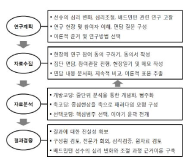
This study was purposed to explore psychological change and regulation process during badminton competition. The data were conducted using group interviews and participation observations who 18 K college badminton players. The data were analyzed using open, axial, and selective coding based on grounded theory method (Strauss & Corbin, 1998). The results were as follows: Open coding results, 89 concepts, 44 subcategories, and 18 categories emerged as psychological change and regulation process during badminton competitions. Axial coding results, the categories are showed structural relationships such as performance, score, psychological momentum, the importance of competition, court environment, physical condition, competition strategy, psychological preparation, past experience, outcome expectation, psychological disturbance, psychological skills, game situation-changing strategy, support-seeking strategy, significant others' behavior, the opponents' behavior, psychological resilience, and maintenance psychological disturbance. Selective coding results, core category of this study was revealed to maintain psychological homeostasis. Environmental context during badminton competitions causes specific situations and events that evoke psychological disturbance. In turn, a player seeks mental and behavioral strategies to maintain psychological homeostasis. There is psychological homeostasis mechanism during badminton competitions for peak performance. Development of proper interest for psychological homeostasis will be improved through this research approach in sport psychology.

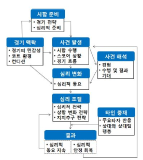
The purpose of this study was to examine the effect on Electro-chemical screen and anaerobic exercise capacity caused by short-term weight loss in amateur boxing players. Subjects of this study were 10 male university boxing player who conducted to weight loss methods. In 1st weight loss, boxing players took rapid weight loss during 5-7days, In 2nd weight loss, boxing players took weight loss 3kg during 2 weeks. The change of ECS and anaerobic exercise capacity were measured before and after weight loss period. Anaerobic exercise capacity was measured by 1RM of bench press and squat. In addition, using the wing-gate test muscle power and power endurance was evaluated. To find out the changes in ECS, urine and saliva was collected after waking up were analyzed. The results were as follow. First, 1RM of squat(p=.003), peak power(p=.023) and mean power(p=.015) showed significant decrease after 1st weight loss method. However in 2nd weight loss method, no factor of ECS and anaerobic exercise capacity were significantly decreased. Second, total urea(p=.015), urine rH2(p=.017), urine conductivity(p=.003), and utilization of vitamin(p=.005) showed significant decrease after 1st weight loss method. However in 2nd weight loss method, urine conductivity(p=.038) and saliva rH2(p=.028) showed significant increase after weight loss. In conclusion, amateur boxing players need a systematic weight loss to maintain optimal conditioning.

The importance of a health problem is emphasized in youth. Unfortunately, healthy activity physical education is not well utilized and is not popularly being researched. In order to improve these problems, this study attempted to explore the validity and applicability of SPARK program by designing and practicing the SPARK based P.E. classes. This study employed a mixed method research method based on a qualitative research strategy. Physical activity and physical fitness level were measured by accelerometers and FITNESSGAM. Additionally, empirical data were collected and analyzed by both Photovoice technique and recording. Findings of this study were divided into designing and practicing perspectives. First of all, the PE classes based on SPARK program was designed by 2009 national physical education curriculum and studies associated with the SPARK program. Further, I attempted to specify teaching strategy for enhancing physical activity level, power of execution and motivation. Second, PE class which has higher physical activity level, more participation and achievement, and successful fulfillment were emerged as consequences. Based on the study results, I discussed the validity and applicability of Physical Fitness based SPARK program and proposed suggestions for future studies.

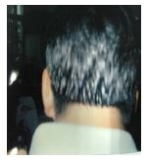
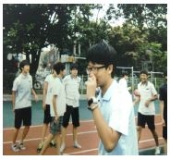


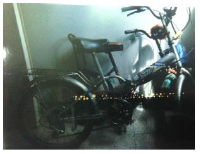

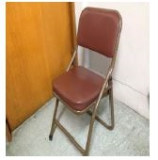
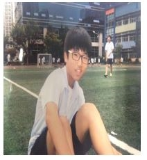
This article aims to examine the research trend of sport history by analysing published research articles over the last decade in the Korean Journal of History for Physical Education, and suggest directions of research in sport history based on the results. We have reviewed a total of 264 articles relying on the analytic framework including the criteria of time period, method, nation, theme/topic, and purpose. The research findings are as follows. First, the post-Liberation period has been studied most often with 45.3%, followed by the Japanese Colonization period (20.2%), the Joseon Dynasty period (11.4%), the diachronic research (8.8%), the period from ancient times through Goryeo (8.1%), and the period of Enlightenment (6.2%). The results indicate that most recent studies in the journal unilaterally focus on the Modern and Contemporary history with 71.7%. According to the analysis result by research method, second, more than 90% of the studies have been conducted using qualitative methods while only 0.6% of the papers have adopted quantitative methods. The qualitative methods include textual analysis, participant observation, oral life story, and focus group interview. Textual analysis has been used most often with 74.5%. Oral life story has been second (22.5%), followed by participant observation (2.1%) and focus group interview (0.3%). The findings from this category show that it is still necessary to diversify research methods and vitalize interdisciplinary research. Third, in terms of nation, over 70% of the papers have studied about Korea, and European countries are the second most frequent region in the research trend (8.3%). The nation that follows is China with 6.4%. Although we analysed a Korean journal in sport history, the result exposes the lack of scholarly attention in the studies of sport history to world sport history reflecting comparative perspectives. By the criteria of theme/topic, fourth, genre has been studied most often with 31.7%, followed by figure (14.1%), facility/institution/organization (14.0%), system/policy/event (12.8%), philosophy/ideology/theory (6.7%), remains/relics/documentary material (6.3%), and domestic regions (5.4%). The results show that the recently published research articles have attempted to include a variety of genres in sports, play, and dance. While the topics for figure and facility/institution/organization also receive significant interest, it is limited that the studies mostly focus on male sport figures but female figures are barely explored. Even when female figures are researched, the attempts are observed only in the studies of dance. Fifth, the largest ratio of papers has had the research purpose of historical evolution (37.6%), followed by value/significance (20%), type/characteristic (15.5%), thoughts/ideology/theory (9.1%), origin (6.6%), suggestion/proposal/prediction (5%), comparison/correlation (5%), and concept/terminology (1.2%). The results expose that the studies tend to concentrate on historical evolution relying on chronological description while the research on concept/terminology is of little scholarly interest. Based on what we have found, it is identified that the recent studies in sport history have mostly focused on the historical evolution of a specific sport genre in the Korean Modern and Contemporary history using textual analysis. Consequently, the results suggest that researchers in sport studies need to put in additional effort to expand research topics and methods, and invite comparative perspectives involving inter/cross-national studies.
PURPOSE This study investigated the perceptions and experiences of collegiate student-athletes with mental health concerns who are receiving sport psychology services. METHODS A total of 196 college student-athletes (98 male, 98 female) were recruited for the quantitative phase, while 14 athletes from 7 sports participated in the qualitative phase. This integrated approach sought to provide a comprehensive perspective on the research subject. The quantitative participants answered scales for depression (CES-D), anxiety (GAD-7), social support (NCAA RSSS), and mental help-seeking attitude (MHSAS), and the qualitative participants underwent in-depth interviews using a semistructured questionnaire based on a socioecological model. Quantitative data were examined using confirmatory factor analysis, reliability measures, independent t-test, and one-way analysis of variance via SPSS 28.0 and AMOS 28.0, and qualitative data were inspected through content analysis and expert meetings. RESULTS First, higher levels of depression, anxiety, and perceived social support were reported by female athletes as opposed to male athletes. Second, athletes in individual sports reported higher levels of social support than those in team sports. Third, athletes who planned to undergo future psychological counseling reported higher anxiety, social support, and helping attitudes than those with no plans to do so. Fourth, athletes who slept for more than seven hours reported lower levels of depression and anxiety and higher levels of perceived social support than those who slept for six hours or less. Fifth, freshman athletes reported higher depression levels than sophomore athletes. Sixth, student-athletes with no scholarships had higher anxiety levels than those with partial scholarships, who then reported higher perceived social support than those with full scholarships. Seventh, a lack of accessibility was the primary barrier to psychological service access for student-athletes. Eighth, engagement in interpersonal relationships was identified as a major stressor among student-athletes. CONCLUSIONS Differences in collegiate student-athletes’ mental health status as well as perceptions of and experiences in sport psychology services depend on various factors. These findings may serve as foundational data for improving sport psychology support services for collegiate student-athletes.
[Purpose] This study evaluated the predictive power of Body Mass Index (BMI) for metabolic syndrome in older adults across pre-, during-, and post-COVID-19 periods, and examined the effects of metabolic syndrome factors on BMI by income level, aiming to inform elderly health management and crisis-related policies. [Methods] Data from 6,242 older adults (aged 65–80) were drawn from the 2019–2022 Korea National Health and Nutrition Examination Survey. Income was divided into quartiles, and time was segmented into pre-, during-, and post-pandemic periods. Multiple linear regression was used to assess the effects of metabolic syndrome factors (diabetes, abdominal obesity, low HDL, hypertension, hypertriglyceridemia) on BMI by income and period. Receiver Operating Characteristic (ROC) analysis evaluated BMI’s predictive power for metabolic syndrome. Significance was set at .05. [Results] Abdominal obesity and low HDL consistently influenced BMI across all groups. In the lowest income group, hypertension increasingly affected BMI during and after the pandemic. BMI Area Under the Curve (AUC) values peaked during the pandemic in this group, while the highest income group showed stable predictive power. [Conclusion] The COVID-19 pandemic had a differential impact on the association between BMI and metabolic syndrome among older adults according to income level. In low-income older adults, the predictive power of BMI for metabolic syndrome increased during the mid-pandemic period, while it remained stable across all periods in high-income groups. Systematic health management programs and policy interventions targeting low-income older adults are required to reduce health disparities during public health crises.
PURPOSE This study analyzed the effect of dynamic lumbar kyphosis on the biomechnical factors affecting the lumbar joints during deep squats. METHODS Thirty adults in their 20s who had experienced weight training for more than one year participated in this study (age: 23.4±3.5years old, height: 175.3±4.3cm, weight: 75.8±6.5kg, squat single repetition maximum (1RM) weight: 115.3±19.5kg). Under both restricted dynamic lumbar kyphosis (RDLK) and dynamic lumbar kyphosis (DLK), subjects completed one repetition of deep squats at a load of 70% of their 1-RM weight. To verify the consistency of deep squat movements performed under DLK and RDLK conditions, intra-rater reliability was analyzed using intra-class correlation . The biomechnical variables of the lumbar joint were calculated during DLK and RDLK deep squats. Paired sample t-tests (IBM SPSS 27.0, Armonk, New York, USA) were used for statistical verification. RESULTS During the deep squat movement performed in DLK and RDLK conditions, the peak angles of the ankle, knee, and hip joints, the minimum height of the pelvis, and the time and tempo showed statistically high reliability, confirming the accuracy of the movement. The peak flexion angle and moment, left flexion moment, left rotation moment, and compression force factors of the lumbar joint during deep squat were significantly lower in RDLK than in DLK. CONCLUSIONS Restricting lumbar dynamic kyphosis during deep squats is essential for decreasing the risk of lumbar joint injury.
PURPOSE This study aimed to examine the effects of motion analysis and image training using self-modeling with visual cues on the skill performance, imagery, and sports confidence of adolescent female soccer players. METHODS The participants were elite soccer players from two girls’ high school soccer teams divided into an experimental group (D girls’ high school, n=16) and a control group (I girls’ high school, n=13). The experimental group underwent motion analysis and image training when performing penalty kicks, short kicks, and long kicks using self-modeling with visual cues, while the control group underwent training using self-modeling videos without visual cues. Before and after the training, the evaluation score was calculated according to kick performance, and the imagery and sports confidence factors were measured. For the statistical analysis of all collected data, descriptive statistics, the Friedman test, the Mann-Whitney U test, and two-way repeated-measures analysis of variance were used. RESULTS First, on the motion analysis using self-modeling with visual cues, the experimental group’s penalty kick and short kick scores were improved and differed significantly, but no significant change was noted in long kick score. Second, as a result of image training using self-modeling with visual cues, all visual, kinesthetic, mood, and controllability factors of the experimental group improved except for the auditory factor, and the interaction effect was confirmed. In addition, the stated sports confidence of the experimental group was improved and the interaction effect confirmed. CONCLUSIONS The analysis of kick motion using self-modeling with visual cues was effective for the penalty kicks and short kicks of adolescent female soccer players. Moreover, this study confirmed that the analysis of kick motion improved the visual, kinesthetic, mood, and controllability sub-factors of imagery and significantly affected the players’ stated sports confidence.
PURPOSE This study aimed to establish a standardized evaluation of the consistency and reliability of the results of the 2018 Buenos Aires Youth Olympics. METHODS The results of the preliminary and the final rounds of the individual Boys and Girls competition of the 2018 Buenos Aires Youth Olympics were collected. Data were organized using Microsoft Windows Excel 2021. Windows SPSS 26.0 was used for descriptive statistics. Intraclass correlation coefficient calculation was used to analyze the evaluation score. The winner/loser decision, and the evaluation interrater agreement was confirmed using Fleiss' kappa. RESULTS There was a difference in the scores given by the judges in both the preliminary and final rounds of both competitions. A low correlation was observed between the decided winner of the judges, and the point variance for each item. CONCLUSIONS In the trivium value system, differences in the evaluation strategies of the judges may exist. Thus, improvements to standardize evaluation should be implemented. In addition, this scoring system considers various factors in the evaluation process, and the scoring system is complicated. Therefore, there may be a need to revise the evaluation system and find the optimal number of judges to create a better evaluation.